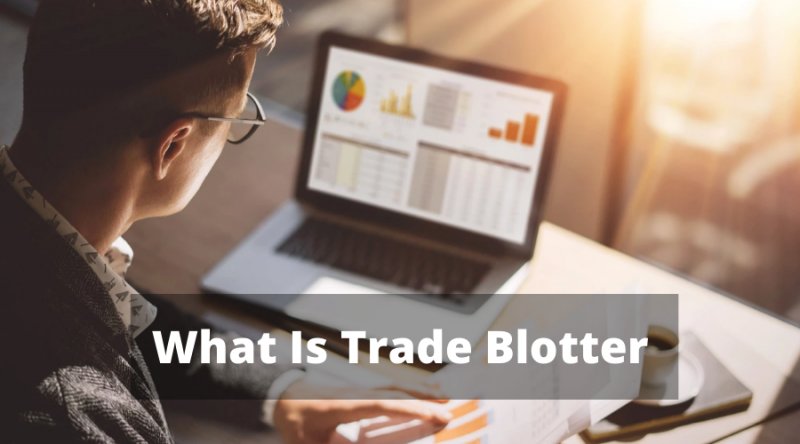What Is Trade Blotter
Trade Blotter: What Does It Mean?
Trade Blotters are trade records and details of trades performed over a certain period (usually a single trading day). The trade details will include the time, the price, the order size, and whether the order was bought or sold. Trades are usually recorded by a trading software program that uses a data feed to create a blotter.
Trading Blotter Explained
A trade blotter records trades so that a trader or brokerage firm can review and confirm them. Blotters are used in the stock, foreign exchange, and bond markets. Depending on the user’s needs, it can be customized. Futures and commodities markets also use trading blotters.
Brokers typically offer their traders blotters as software programs. In a blotter, the type of security sold, the date of sale, and the amount and price of the sale or purchase are listed. The market in which the trading took place and whether it was a buy or sell are also defined.
Additionally, the blotter shows whether a trade was properly settled and if orders were entered but canceled before they were filled. On the blotter, the trader decides what data should be displayed. In case there is an issue with a trade, a broker keeps track of all transactions using a blotter.
Trade Blotters: How do they work?
Trade Blotters can be used in conjunction with or instead of a trading journal for developing trading techniques and strategies. A blotter is usually used by traders to assess their performance at the end of the trading day. Sorting the blotter may require revising areas in which he or she should have performed better, such as timing with entries and exits.
In addition, stock exchange regulators sort the blowers to detect illegal trading. There are numerous ways to sort trade discrepancies to reveal them. Businesses use trading blotters to track their investments during a stock exchange audit. There would be a separate trade blotter for equities, and another for fixed-income securities, etc.
Some portfolio managers may also show favoritism in selecting customers by using blotters. Often, they choose customer accounts with profitable trades from the blotter. As an alternative, they desire customers who buy or sell the same security at significantly different prices.
What Is Trade Blotter?
Trade Blotters (also known as deal blotters or trade blotters) record all trades made during a specified period (usually a trading day) along with their relevant details.
- An electronic blotter records the trading activity and history of an individual.
- Regulators like the SEC and clearing firms use trade blotters to detect illegal trading and adjust outtrades.
- In addition to evaluating and analyzing trading positions, blotters can also be used by traders.
Blotter: An Overview
Trade blotters are used to document trades so that a trader or brokerage firm can review and confirm them. In the stock market, foreign exchange market, and bond market, blotters are mainly used. Depending on the user’s needs, it can be customized. Option and commodity markets also use trade blotters.
Trade details include the time, price, order size, and whether it was a buy or sell order. An audit trail of transactions is helpful to review the success of a particular trading strategy.
The trades made through a data feed are usually automatically recorded through trading software programs, rather than by hand on large boards or paper spreadsheets.
Blotters are usually provided as software programs by brokers to their traders. There is information about what security was traded, the time of the trade, the quantity and price of sale or purchase, the ECN market the trade occurred over, and whether the order was bought, sold, or shorted.
Besides indicating whether a trade has been settled appropriately, the blotter also includes orders that have been entered but canceled before being filled. Blotters can be customized to show specific details. Whenever an issue with a trade arises, a broker keeps a record of all transactions on a blotter.
Usage of Trade Blotters
Blotters can be used by traders to improve their trading techniques and strategies in addition to or instead of a trading journal. The blotter is usually used by traders to review their performance at the end of the day. In the blotter, they can review areas where they could have performed better, such as timing with entries and exits.
Compliance departments and regulators, including the Securities and Exchange Commission (SEC), sort the blotter as well. Trading discrepancies can be revealed through a variety of sorting methods. Companies use trading blotters to show the types of investments they have made during an SEC audit. In the case of equities, for example, a separate trading blotter will be used, while in the case of fixed-income securities, another blotter will be used, etc.
Trade on a stock on the watchlist, or restricted trading list, might indicate insider trading. Some portfolio managers may be showing favoritism to select clients if the following (or other information) is revealed on their blotters:
- The blotter frequently shows profitable trades from certain client accounts.
- The purchase or sale prices of the same security differ considerably between client accounts.
- Commission-based accounts are prioritized over other types of accounts in trading.
A blotter may also reveal portfolio managers involved in investment strategies that deviate from those disclosed to clients. When a buy-and-hold investment portfolio has only short-term traded securities, this is a red flag.
The trading activity highlighted on a blotter will be investigated further to determine if there was any wrongdoing.
